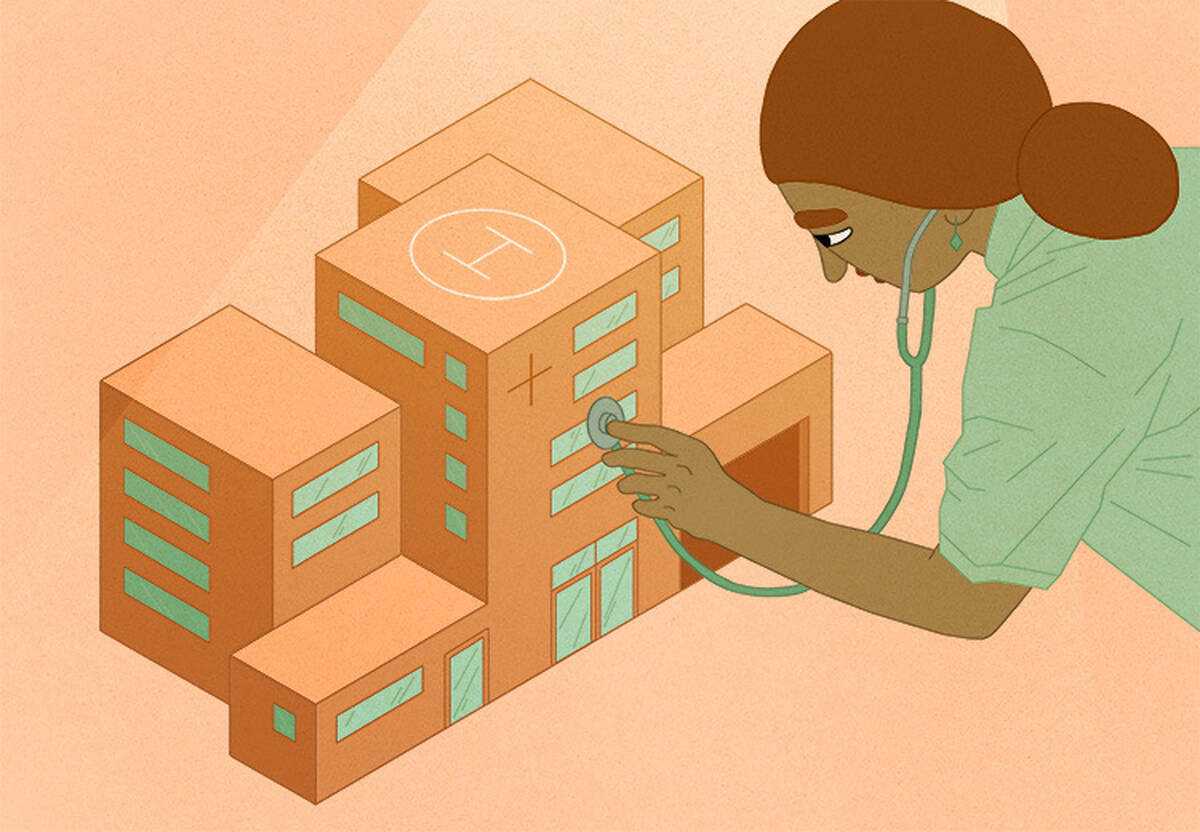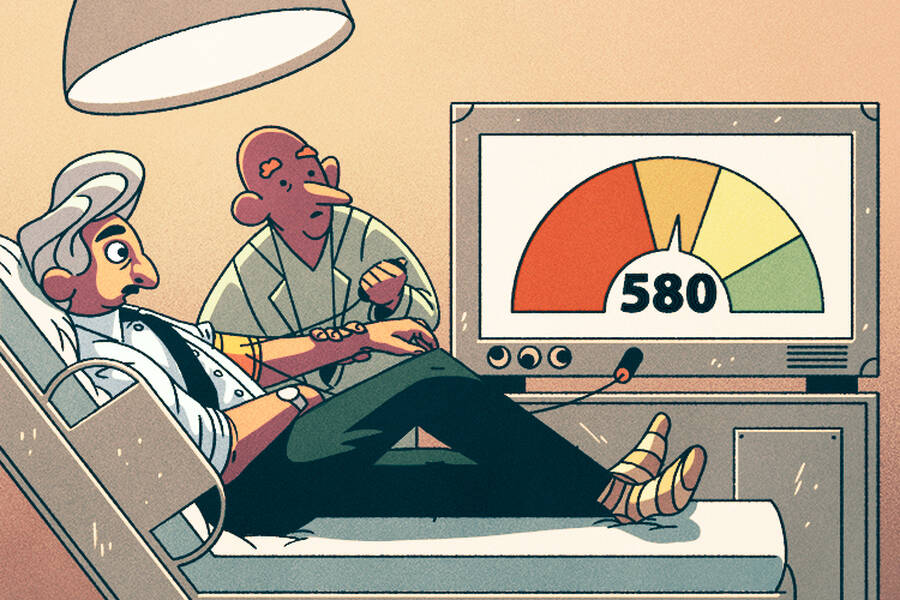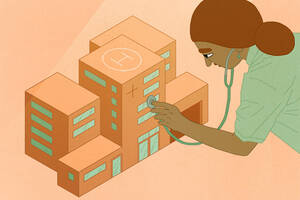Healthcare Jul 9, 2018
How to Solve Healthcare’s Trust Deficit
Doctors, patients, and insurers are often skeptical of each other. Three experts discuss ways to counteract that.

Lisa Röper
The healthcare industry in the United States has trust issues: doctors are suspicious of insurers, who don’t trust hospital administrations. Patients are seeing their costs skyrocket and wonder who, if anyone, is on their side. And despite the costs associated with healthcare, the U.S. lags behind other developed nations in population health.
The sector’s sheer size—it accounts for nearly 18 percent of U.S. GDP—and complexity mean any potential solutions for improving healthcare have to factor in a tangle of interests, many of which are at odds.
So what can be done to improve outcomes for everyone involved?
Kent Grayson, a professor of marketing at the Kellogg School, is joined by Lakshmi Halasyamani, the chief quality and transformation officer at NorthShore University HealthSystem, and Daniel Dahl, Senior Director of Health Solutions at Alight Solutions, to discuss how the various players in the industry might tackle the challenge.
This interview has been edited for length and clarity.
Kent GRAYSON: Why is it that extremely smart, extremely empathetic healthcare professionals assume that other people who are working in the ecosystem actually don’t have a patient’s best interests at heart? Why do you think a lack of trust happens even to the best of us?
Lakshmi HALASYAMANI: Because I think we spend an inordinate amount of time thinking about what isn’t working well, as opposed to spending even half of that amount of time on what is working well—and thinking about how we can amplify that. We have to ask ourselves, “How do you take something that was good and make it consistently good all the time?”
Some of this is our clinical orientation, which is always about figuring out what’s wrong as opposed to figuring out what made something right. A lot of the people in healthcare are a little bit Eeyore-like, and we probably need a few more Tiggers.
One way the Kellogg School is facilitating new thinking about the changing healthcare industry is its recent Expert Collective on Trust in Value-based Healthcare, led by The Trust Project at Northwestern and the Kellogg Health Enterprise Management program. Over the course of this collaborative event, more than a hundred leaders from across the healthcare ecosystem—including Kent Grayson, Lakshmi Halasyamani, and Daniel Dahl—met in an open forum to discuss systemic challenges to trust in value-based healthcare. This interview centered on their reflections after participating in the Expert Collective.
Daniel DAHL: I think that part of it is price or cost.
Whether you’re a physician or you work in the industry or, most importantly, you’re a patient, you’re seeing the costs go up, and you don’t feel like you’re getting anything in return.
We all know technology is getting better. But if people feel like they’re being taken advantage of from the beginning—and a lot of that starts with the premium costs or the bills from their physicians—they feel like the system is stacked against them and that the whole system must be broken.
I think that wears on all of us in the industry.
GRAYSON: It’s partly due to this idea, which is based in reality, that there’s a fixed pie. I mean there’s only so much money that the economy is going to spend on healthcare, and I know it keeps going up, but it’s not going to go up forever. I think people are always wondering, “How big a piece am I going to get, and why is that person getting a bigger piece than I am when I contribute more value?”
HALASYAMANI: I think there is an element of that, though I don’t know if people are that reflective in their day-to-day practice. I think more common is the sense that I am working really hard to make a difference and sometimes it seems regardless of how hard I work, the good outcome that I want for my patient is getting harder and harder to achieve. This to me is at the heart of the change we need to make. We have to align and optimize our systems rather than ask people to work harder in broken, disconnected systems. But this is really hard to do.
I don’t know if any of you have tried a Julia Child recipe—they are incredibly complex. And if the meal that comes out after three hours tastes really bad, that feels really bad. It’s like, “What have I gotten for my effort? I’ve gotten [something that tastes like] a take-out pizza, basically.”
There is a similar mismatch between the effort and sincerity that medical professionals have and what ends up as the result for patients. And that can be very demoralizing because we want to do a good job.
GRAYSON: What about patient education? A high-school kid is going to get training, if they’re lucky, in financial literacy. But even the luckiest ones don’t get training in health literacy: what to ask your general practitioner, what does insurance do, all that kind of stuff. Do you see that as low-hanging fruit for improving trust in the system?
HALASYAMANI: I actually do. I think what it does is it takes the patient from being a passive victim of whatever the system develops or creates for them, to someone who can actually get the system to work for them.
“Employers are increasingly adding tools and resources to help workers learn more and to get and stay healthy.” —Daniel Dahl
DAHL: Health—and really total well-being education—is an area that employers are increasingly addressing with their people. Employers are increasingly adding tools and resources to help workers learn more and to get and stay healthy—everything from online resources, wellness apps, in-person coaching, and information sessions. So many employers are trying to fill the void in some ways, though there’s always room for improvement.
GRAYSON: Could you imagine companies hiring patient advocates to serve an educational function?
DAHL: Absolutely. Employers can and do hire health advocates, people that their employees can call who are more highly trained than your typical customer service center or HR benefits person. The advocates can access your claims information, your treatment plan, and help you navigate if you’re double-billed or run into other roadblocks.
Another thing employers can offer is better tools. We all have phones and computers in our pockets that can help us; how do we package the data and make it more accessible so that people can make good decisions around cost and quality in real time?
As a patient, if I am enrolling for benefits and I know I’m going to have a baby and that’s going to cost a certain amount, how can I use the applications I have in my pocket to help make really good decisions? New enrollment apps are available that help guide patients through the enrollment process, taking into account those life events and individual needs to make the decision-making process easier and better for patients.
GRAYSON: As we think about these advocates or apps, I wonder whether a conflict arises between what might be best for the patient and what might be cost-effective for the employer? I know these goals align in many cases because the employers want healthy employees. But I imagine there are also times where, if the advocate was really a patient advocate, there might be times when the employer is like, “Oh gosh, I wish he didn’t actually advocate for that.”
DAHL: I think the employer has the most to lose with a patient who is unhealthy: absenteeism, being away from work, or low-quality work when they’re there. It is in the employer’s best interest to help their workers get and stay healthy.
To answer your question about conflict of interest, there are laws that protect the privacy of workers, so employers don’t have visibility into the advice or care individual employees are receiving.
HALASYAMANI: A big component of patient education is a trusting relationship, and that’s something that takes time to develop and isn’t always going to emerge with an employer.
What I think is interesting is I’ve talked to some of my friends and colleagues about, “Hey, what would you think if an employer offered services like a patient advocate?” Several of them have said to me, “Well, first of all, I’d be very suspicious if my employer made me do something because why are they making me do it?”
So I think who the messenger is is really important. Even though we might get the message right, it has to come from the right messenger.



